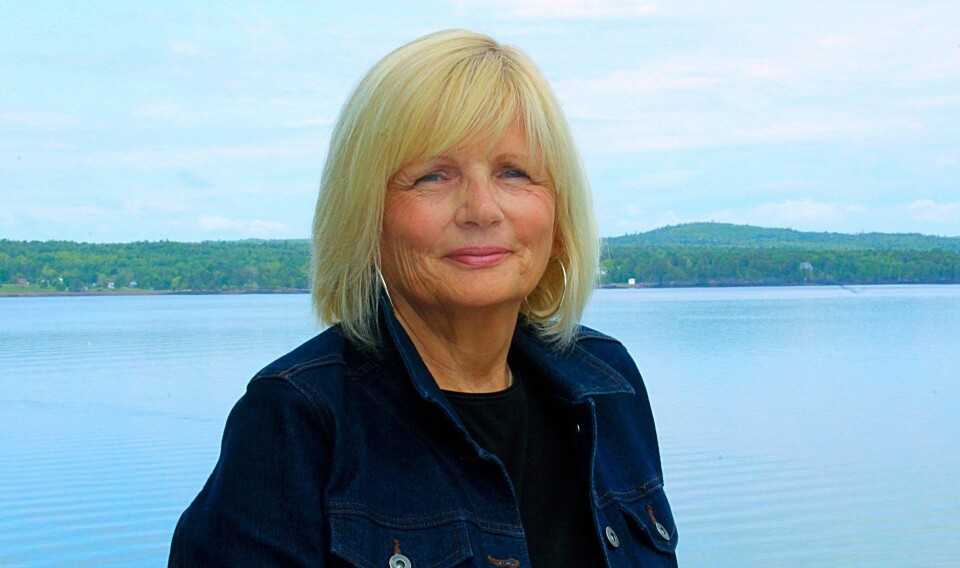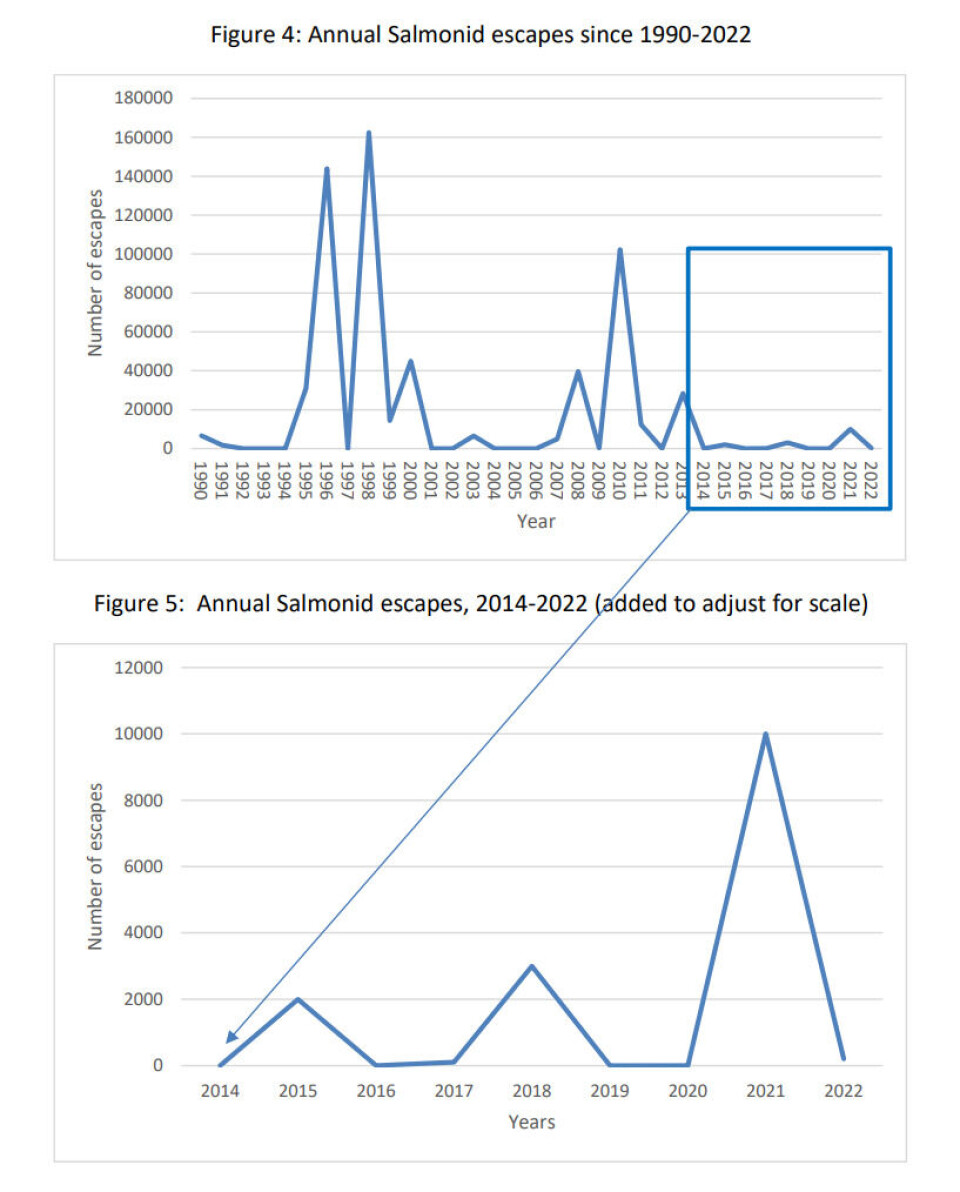
Newfoundland salmon farmers slam 'biased science' from federal researchers
Producers dispute theory that sector is to blame for wild fish decline in river
Salmon farmers in eastern Canada have challenged “speculative statements” by two federal government researchers who said the sector was the most significant cause of wild salmon decline in a Newfoundland river.
The Atlantic Canada Fish Farmers Association (ACFFA) says Department of Fisheries and Oceans (DFO) scientists Travis Van Leeuwen and Ian Bradbury, who are based in Newfoundland, didn’t present any conclusive data to back up their claim.
“This is unacceptable coming from federal government scientists,” said ACFFA, which wants the researchers to retract statements made to the media in relation to a DFO review of Atlantic salmon in Conne River, on Newfoundland’s south coast.
Abundance of Atlantic salmon in the Conne River has fallen by 92% over a period of almost four decades in contrast with most other populations in the region, suggesting that local factors may be contributing to the decline, the abstract of the report states.
Threats to wild fish
Van Leeuwen told the Canadian Broadcasting Corporation (CBC) that the research found three main causes of the decline: the effects of aquaculture, climate change and predation. Aquaculture was deemed the most significant, as escaped farmed salmon breeding with wild salmon has been a major issue.
He said introgression between wild and escaped farmed salmon, and sea lice from fish farms, were threats to wild salmon.
“These outbreaks occur when smolt and adults are in the area of the aquaculture,” he told CBC. “To think that somehow they’re not affected by this is, I think we're beyond that now. But quantifying the magnitude of these effects of pathogens and parasites on wild salmon populations is incredibly difficult.”
Old data
Jamie Baker, executive director of the Newfoundland Aquaculture Industry Association (NAIA) told CBC in an email that there’s “nothing new” in the DFO report. He said it relies on data 12 or more years old and “appears to understate the clear impacts of climate change and warming waters everyone is seeing in the marine environment”.
ACFFA said the future of Canada’s economically important aquaculture sector is dependent on the quality and objectivity of sound science to inform regulatory and policy decisions.
It pointed out that:
- Wild Atlantic salmon populations across the Atlantic region including the Conne River have been in decline for decades for many reasons including predation from rapidly growing seal populations – long before salmon farming began.
- Very few farmed Atlantic salmon have ever been detected in the Conne River, and salmon farms are 15-20 km away from the Conne estuary. “It is a well-known fact that genetic material from Atlantic salmon of European origin is regularly found in wild salmon populations in Newfoundland and the Maritimes. This is likely part of the naturally occurring drift of wild salmon populations in the North Atlantic being influenced by well documented south to north warming due to climate change.”
- Escapes from fish farms have been dramatically reduced since the early 1990s and are well below 1% every year since 1995.
- Sea lice are not a significant issue for salmon farms in Bay d’Espoir because of the freshwater influence; wild smolt run timing is also out of seasonal sync with appearance of gravid female lice on farms.
- Over the last two decades, federal and provincial forums have reviewed scientific literature detailing the benefits and risks of salmon farming and found less than minimal impact to wild salmonids.

'Biased science'
“As we move forward to realise the potential of salmon farming for Canada, governments and elected officials need to be able to defend the integrity of their scientists to shape effective regulatory systems going forward. There is no room in that discussion for speculative, biased science,” said ACFFA executive director Susan Farquharson in a press release.
“The fact is climate change and predation have been occurring long before salmon farming. For these two researchers to point the finger at salmon farming alone as the major reason for wild salmon decline in the Conne River is irresponsible.”
Two 'escapes'
The Fisheries, Forestry and Agriculture Department of the Newfoundland and Labrador government received just two reports of salmonid escapes in 2022.
A suspected escape of approximately 200 steelhead trout was reported due to a tear found in a net. No escaped fish were observed or reported outside the cage. Due to this incident, the company was required to install predator nets on all cages and have stainless steel core nets for all of its new site stockings.
One Atlantic salmon was observed and recovered outside of a net pen. The salmon accidentally entered the waters outside the net pen due to human error during a fish handling event. Recapture efforts were initiated by the company under the direction of DFO and the fish was retrieved.
112 licences
The salmonid species cultured in Newfoundland and Labrador are Atlantic salmon and steelhead trout. For 2022, there were 112 commercial salmonid licences, over 7,957 hectares of water.
Salmonid production was 8,232 tonnes in 2022, down 48% compared to 2021. The market value of salmonid production for 2022 was CAD 104 million, a decrease of 40% in 2021. However, the steelhead trout portion of salmonid production increased from 48 tonnes in 2021, to 677 tonnes in 2022.
The world’s biggest salmon farmer, Mowi, and Grieg Seafood produce Atlantic salmon in the province. Grieg, which must use sterile, triploid salmon to prevent introgression in the event of an escape, plans to eventually produce 65,000 gutted weight tonnes on salmon annually in Newfoundland: 45,000 gwt in Placentia Bay, and a further 20,000 gwt in the West Bays area, west of Placentia Bay.
























































